Scenes from Mumbai (Part 3): A “City of Dreams” and Extremes
Scenes from Mumbai (Part 3): A “City of Dreams” and Extremes
- Posted by Colleen
- On June 8, 2022
- Comments
- 3
My time in Mumbai, nicknamed “The City of Dreams,” was an exploration of extremes.
From narrow, winding, stone/brick/cement-patched lanes lined with trickling sewage water inside Dharavi Slum (the largest slum in Asia and filming site for the movie “Slumdog Millionaire”) to the sparkling lights, boutique hotels, and serene vibe of Marine Drive.
From Mumbai’s cramped communal spaces, like Dhobi Ghat (the world’s largest open air public laundry) and various street markets, to a 60-story luxury high-rise building built to house just one billionaire and his family (read about that here if you’re interested).
We explored “old Mumbai” through its colonial and pre-colonial structures, often flanked by “new Mumbai’s” looming skyscrapers-in-progress, and we flew in and out of its ultra-modern airport that has won several architectural awards.
If you ever have the opportunity to visit Mumbai, I would heartily recommend it (and I hope to return again, too)! In the meantime, I’ll share a quick view of Mumbai through my lens below.
Dhobi Ghat
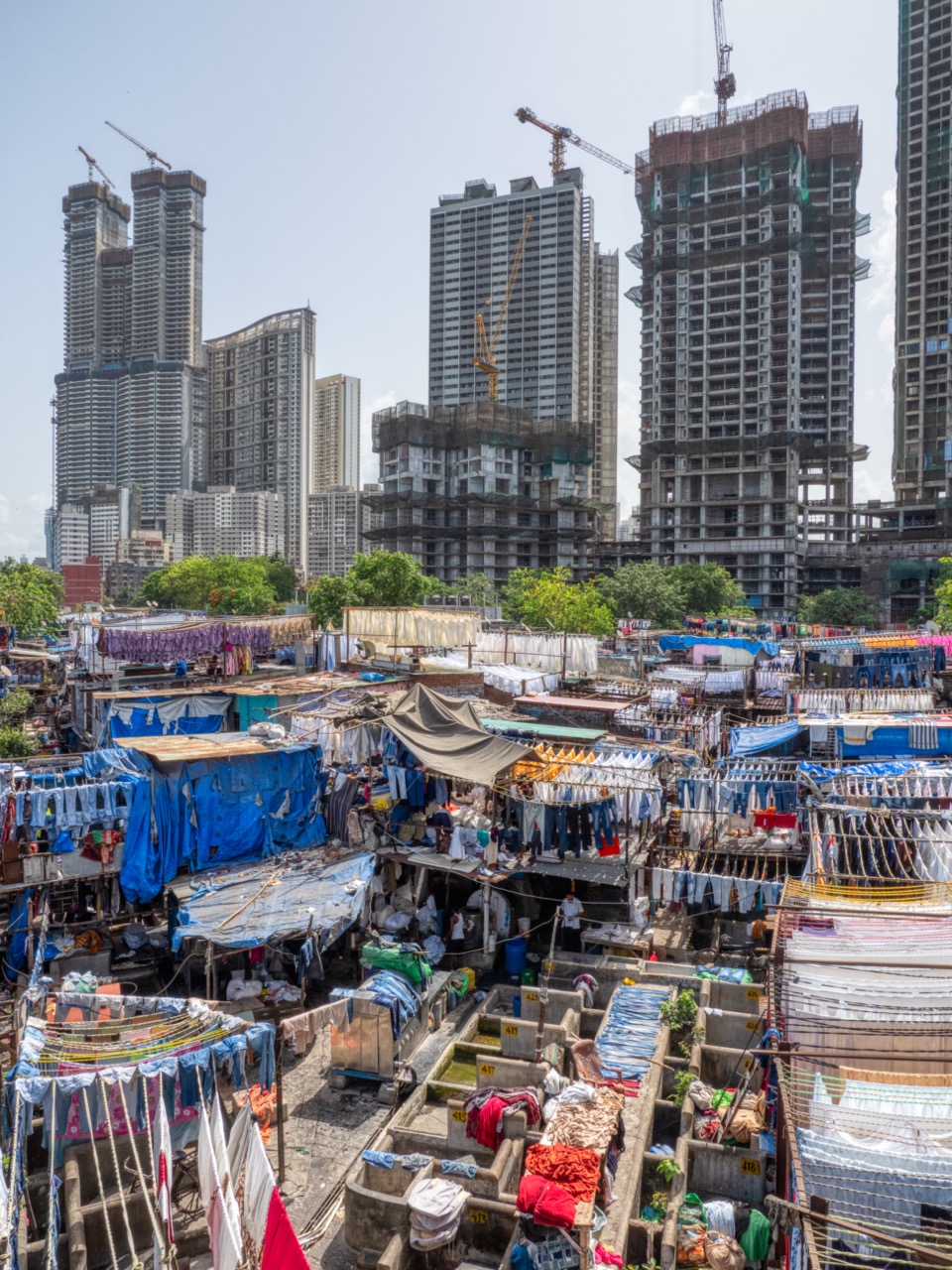
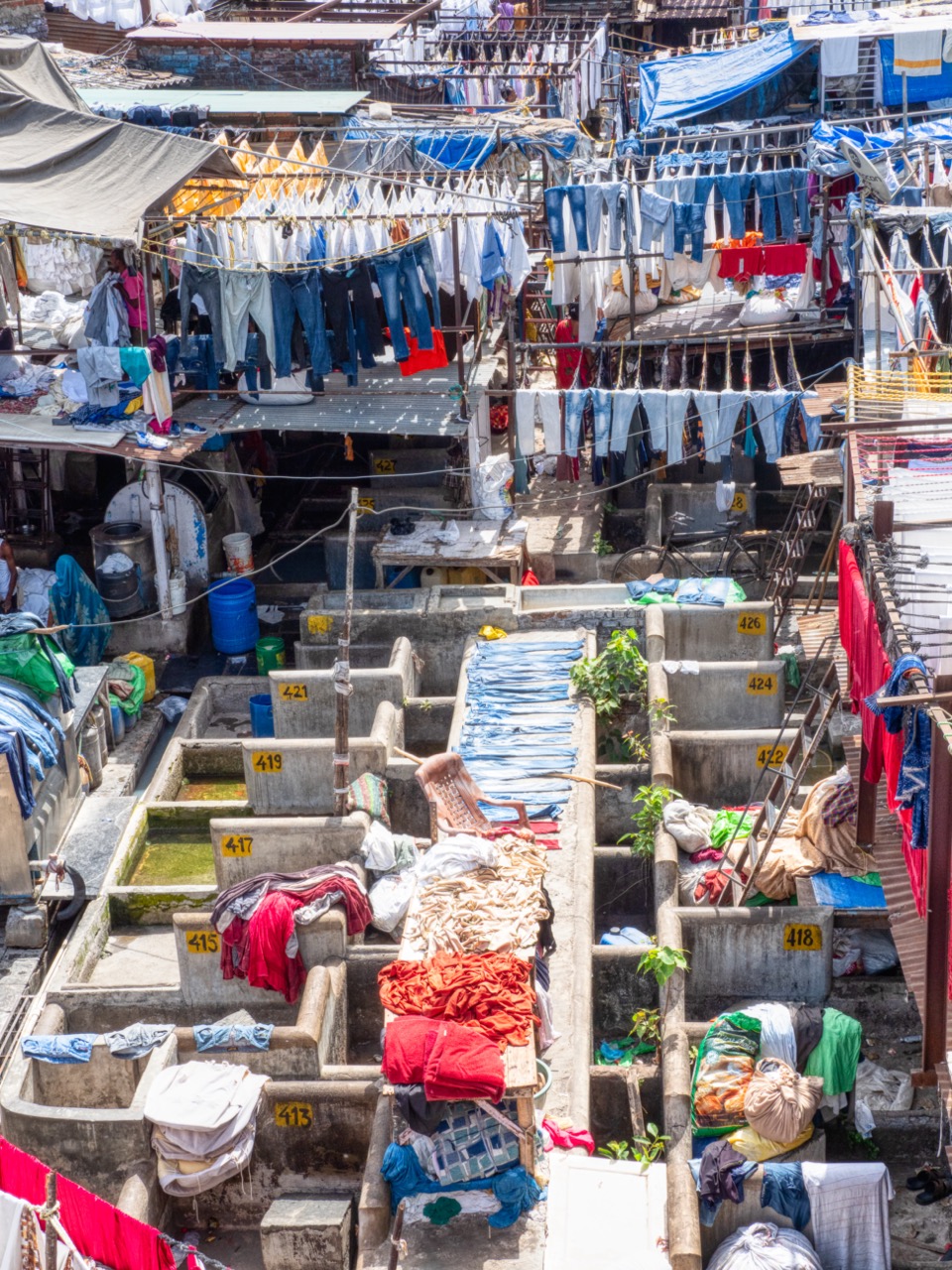
Dharavi Slum
I had arranged a tour of Dharavi through a non-profit “responsible tourism” organization offering educational tours led by guides from the slums and giving 80% of tour fees to programs for slum children. Our guide, Nilesh, grew up in the slum next to Dhobi Ghat (the community laundry shown above), but he was quite familiar with Dharavi and taught us a lot about the community as we walked.
From the first part of our walk through Dharavi’s residential area, we could get a glimpse of life within each tiny home as we passed the usually-open doors. Inside, families cooked, laughed, and cleaned, while outside in the tight spaces between buildings they socialized with neighbors, played, and sought relief from the intense heat inside.
In the commercial area of Dharavi, we stopped at several businesses to watch industrious folks working in one of the slum’s many thriving industries. Apparently 80% of Mumbai’s plastic is recycled in Dharavi, and at one recycling center we saw people sorting plastic and others crushing it (later we visited a shop where the large machines that crush the plastic were being built from scratch). We learned that leather goods are another big industry here, and we watched workers in a steamy room stirring leather pieces in rickshaw-sized vats of dye, boiling water, and salt, while others hung leather to dry or ironed it flat.
This was a “no photo” kind of tour (to respect the individuals who live and work in Dharavi), but if you’re curious about the largest slum in Asia, I found this video below that does a pretty good job of representing what I saw.
For another take on life in Dharavi (along with some informative stats to put things into perspective), take a look at this additional video.
Dharavi’s Community Murals
What I did want to take photos of, however, were the beautiful murals painted on apartment buildings on the outskirts of the slum (which was allowed by our guide). I love murals in general and often seek them out during international travels, but these had special meaning. I learned that the murals were commissioned by “St+art India Foundation” in an effort to make art interactive and bring it from the galleries to the streets–even those of a slum.
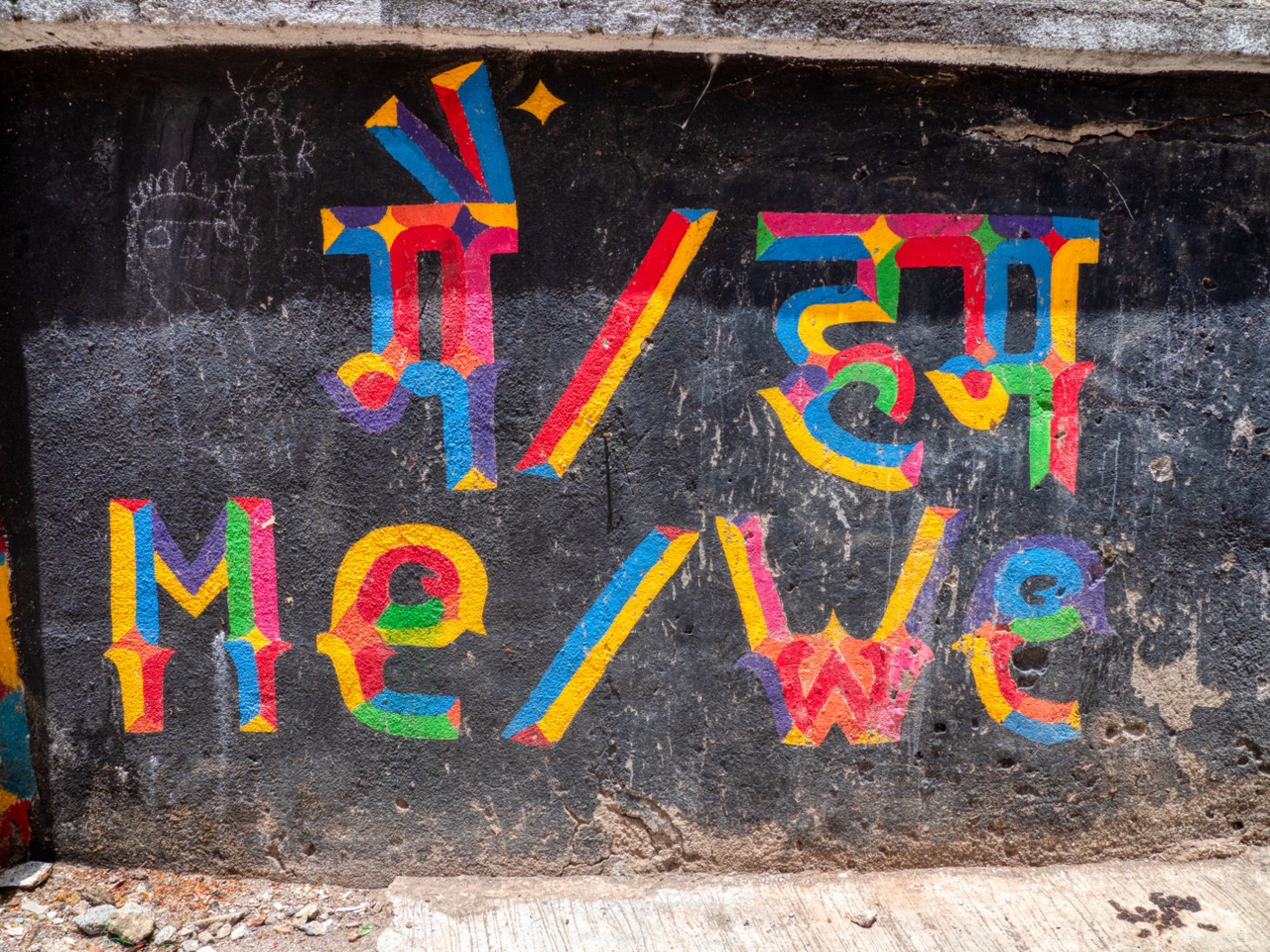
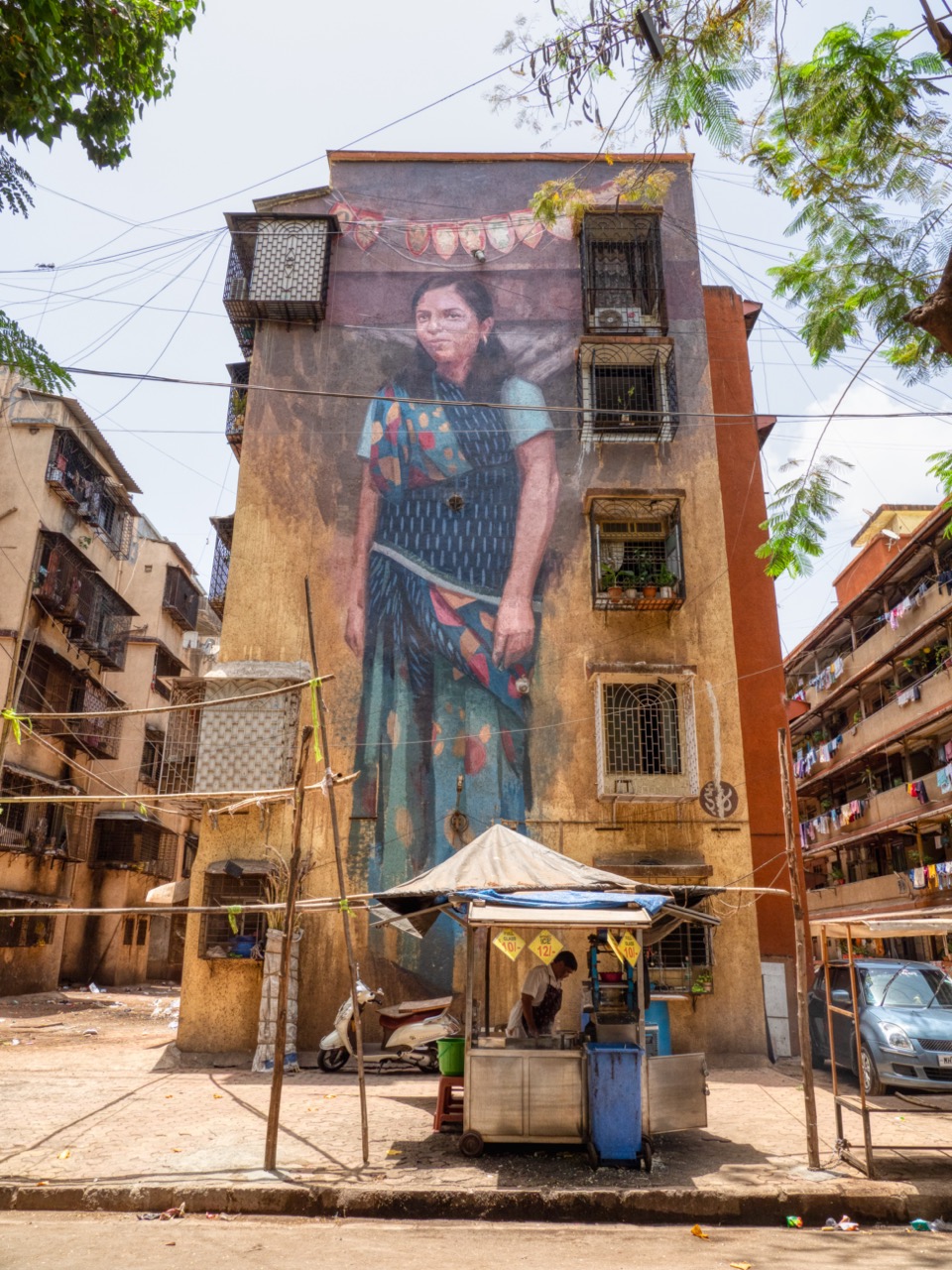
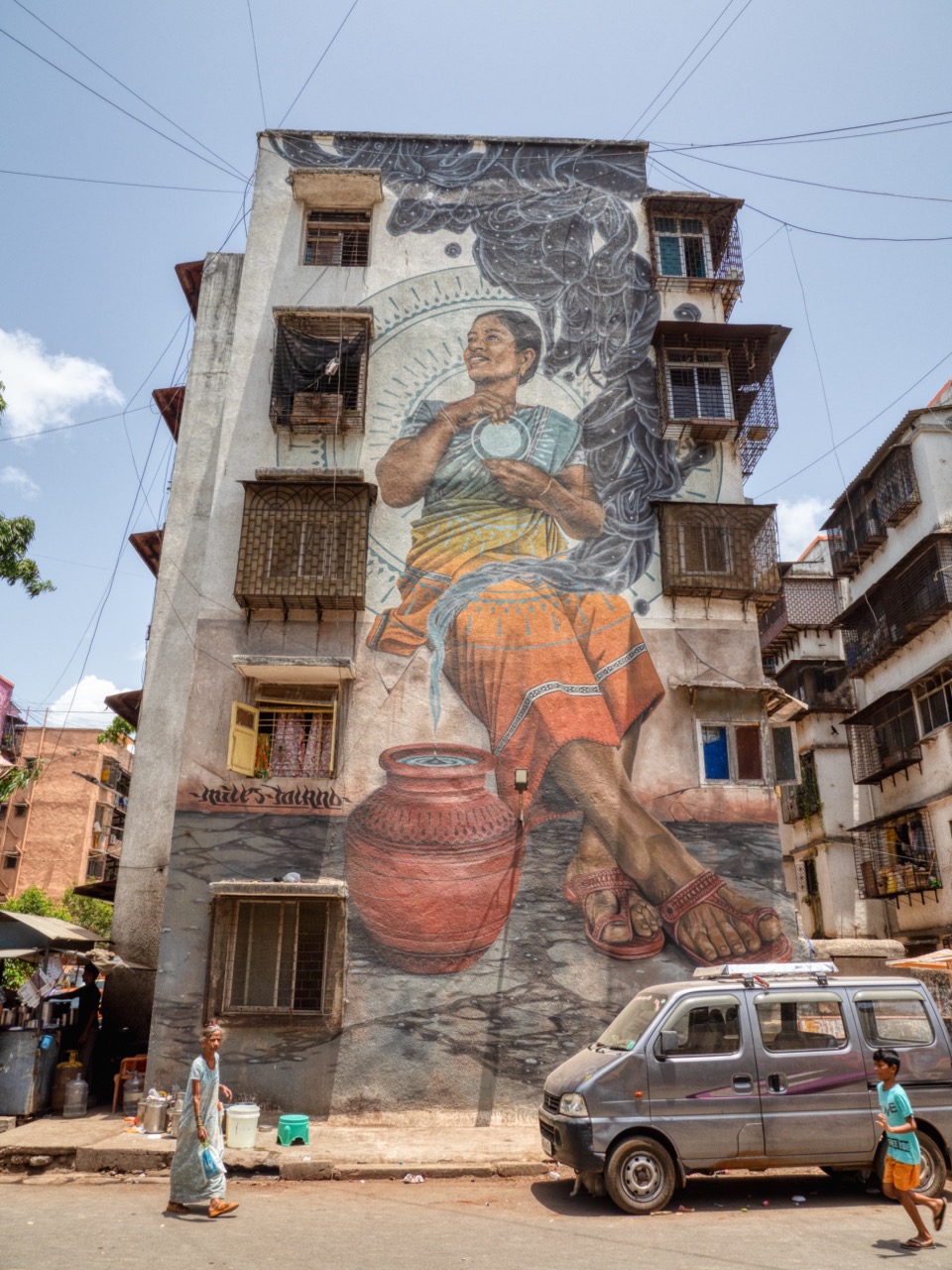
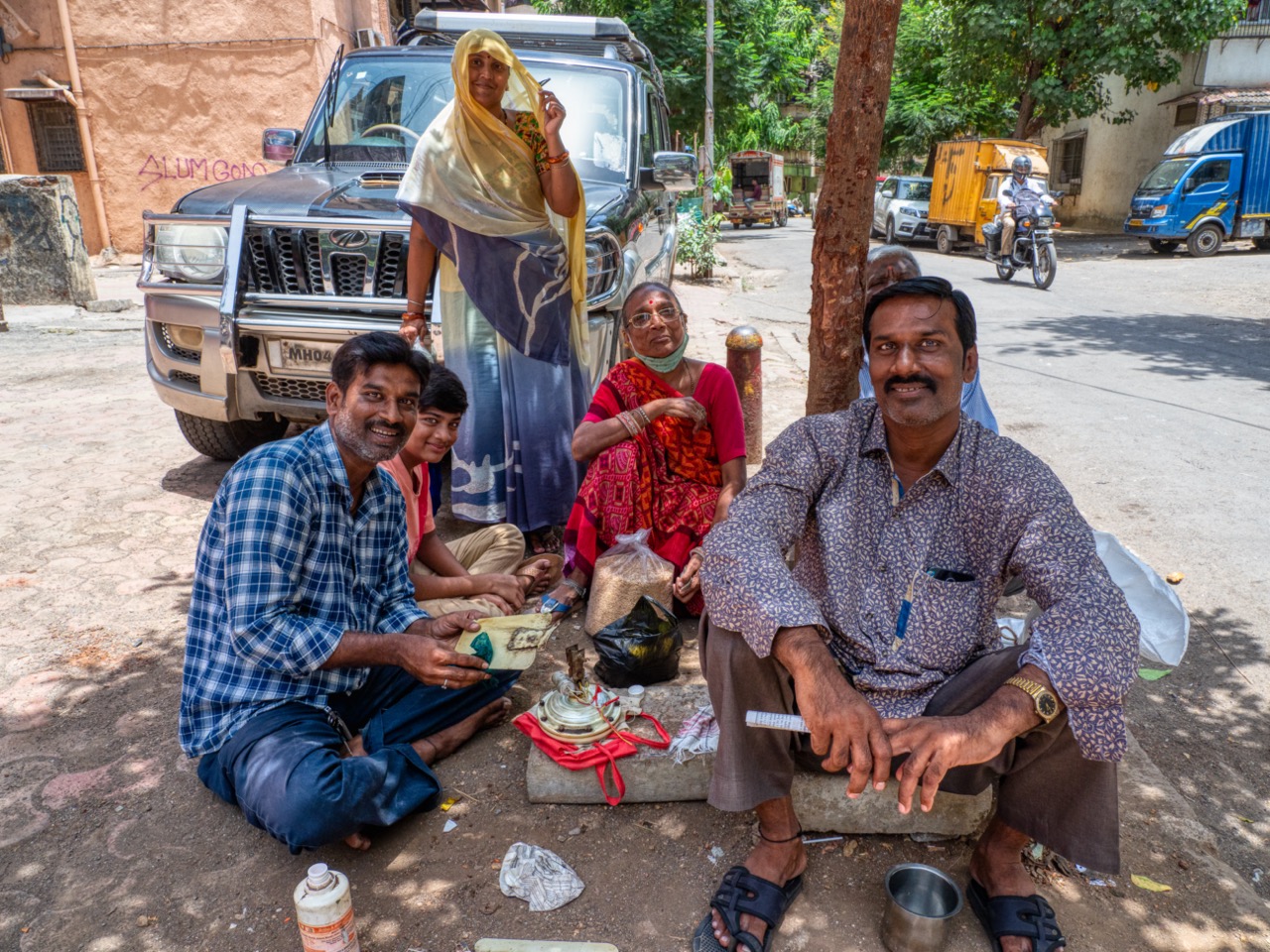
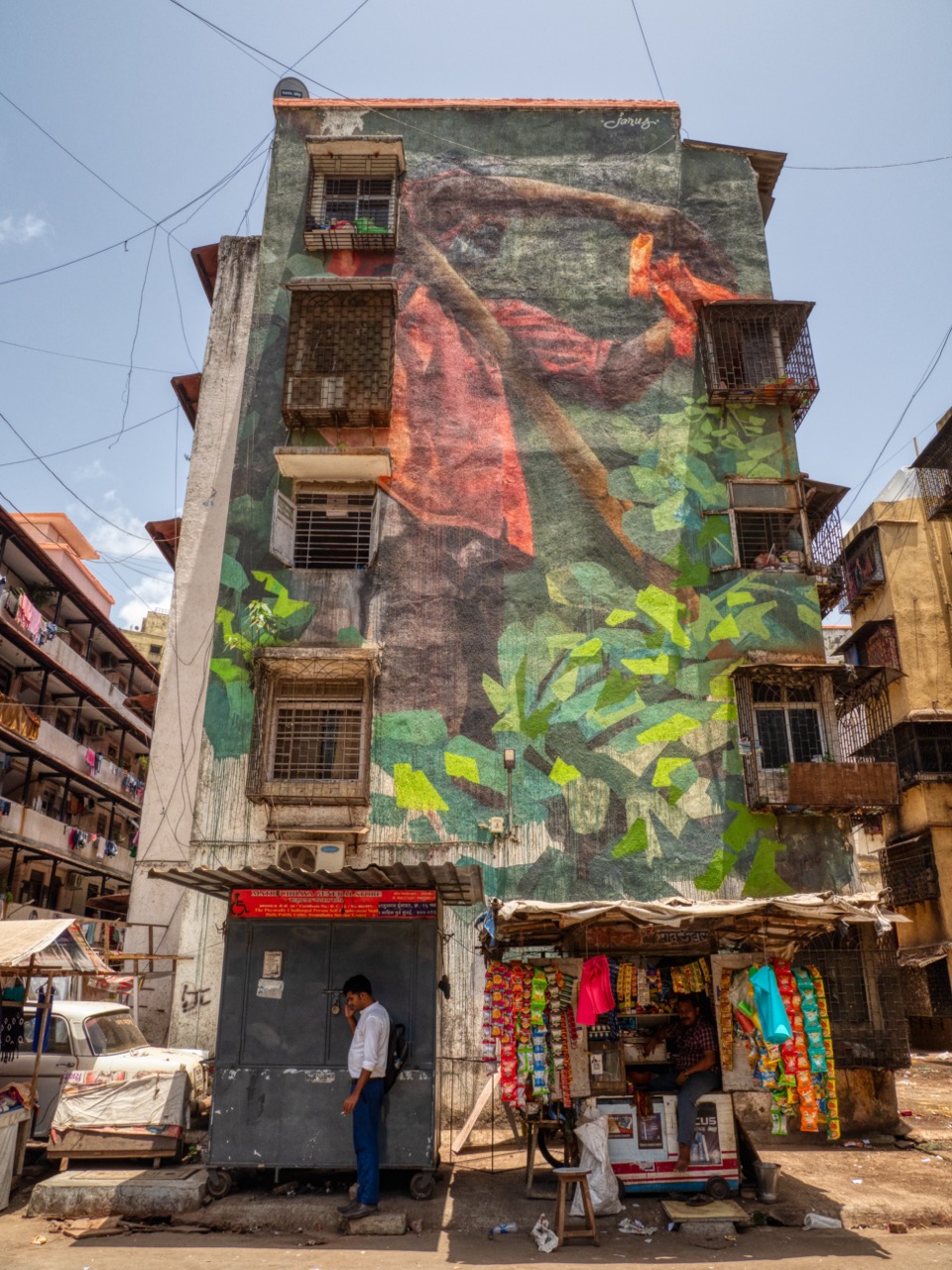

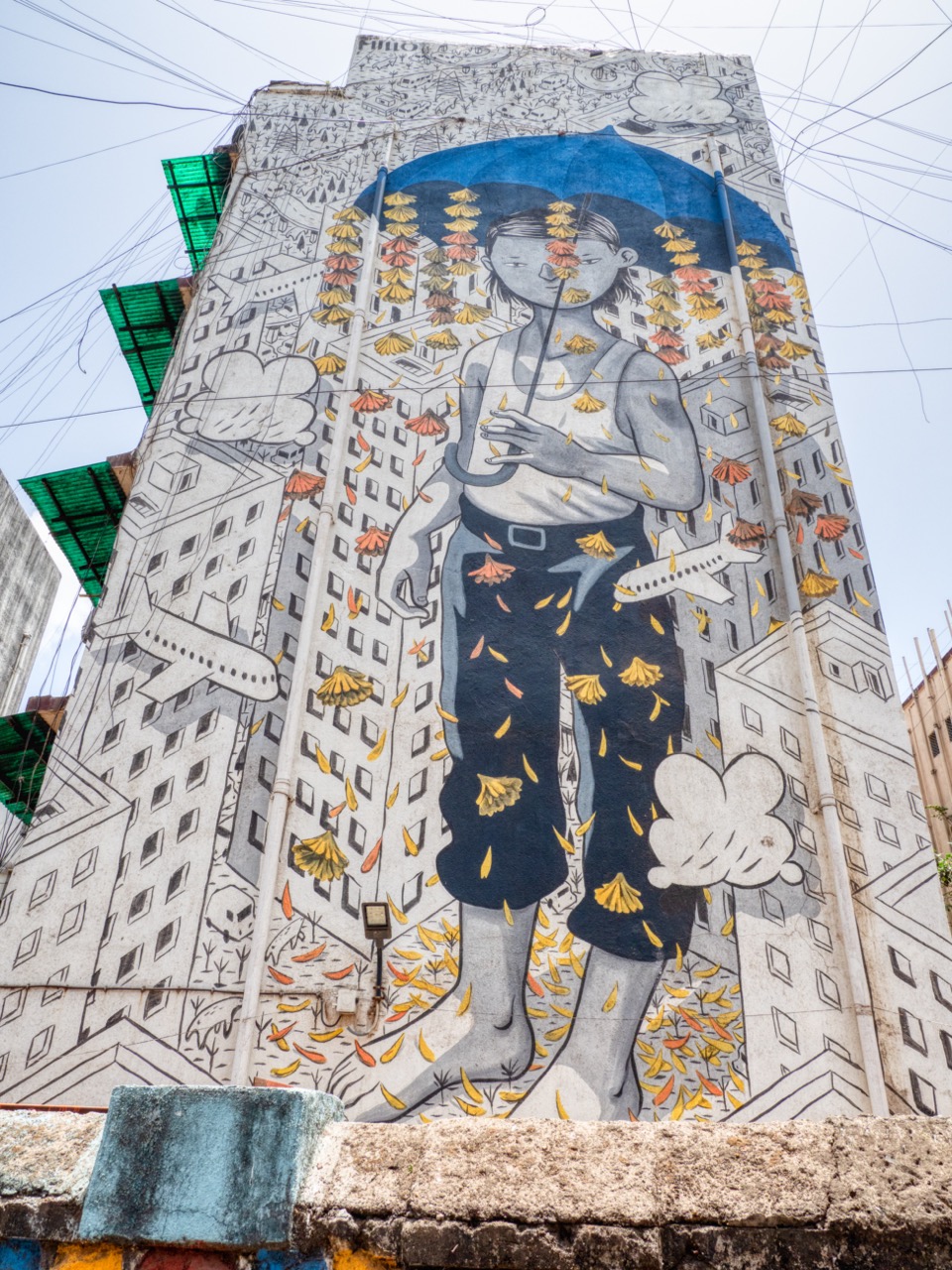
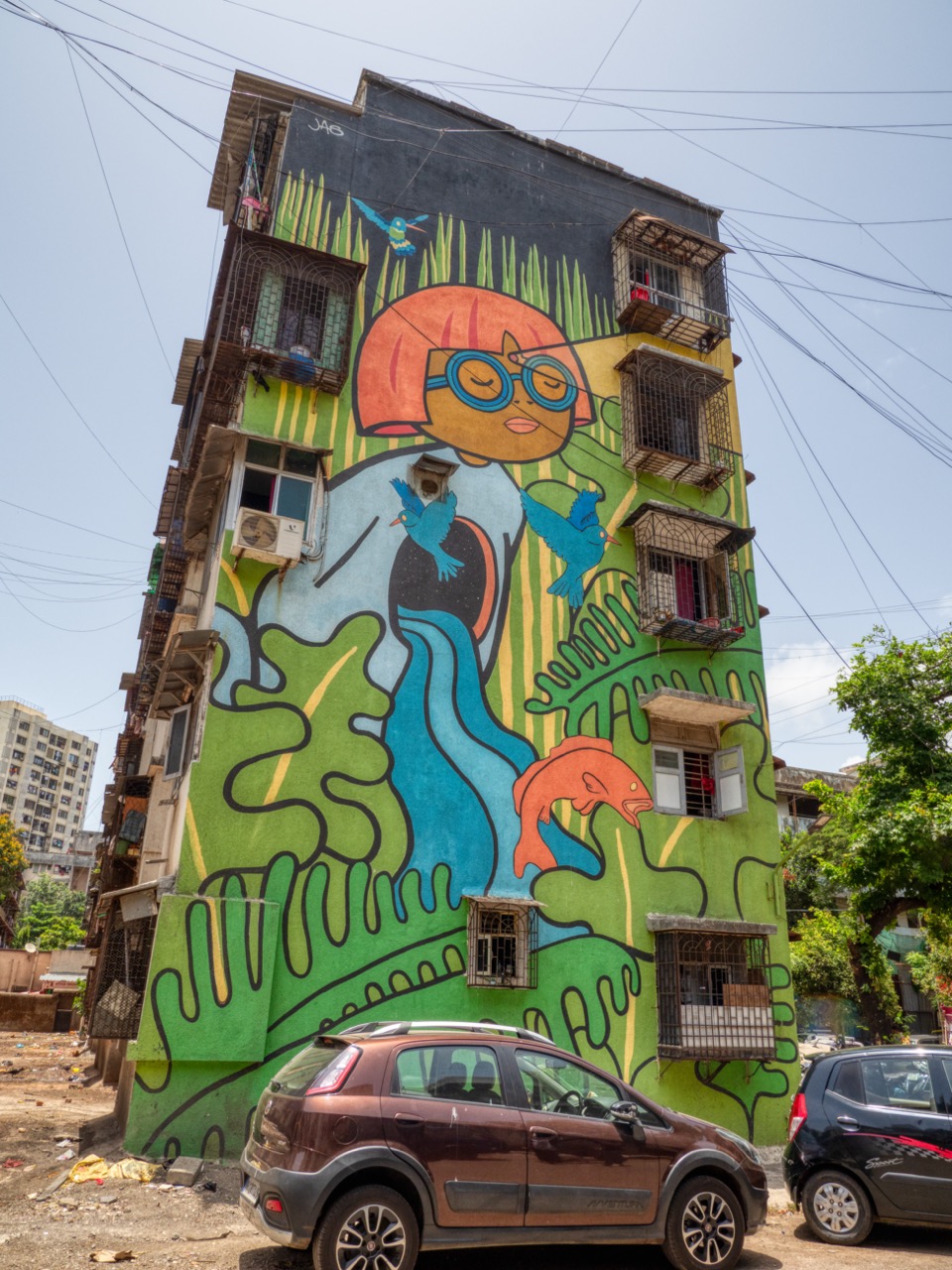
Dadar Phool Gali (Flower Market)
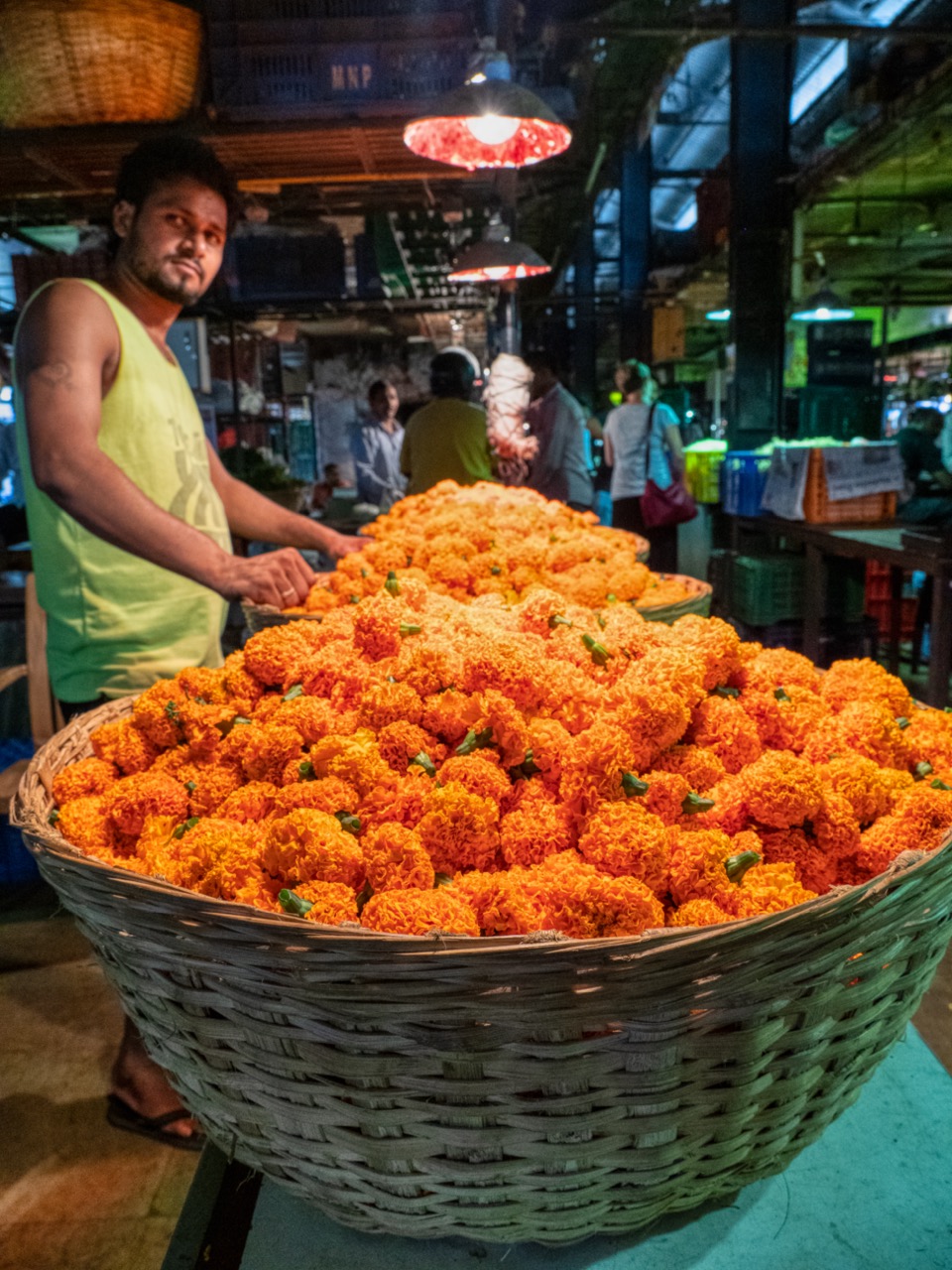
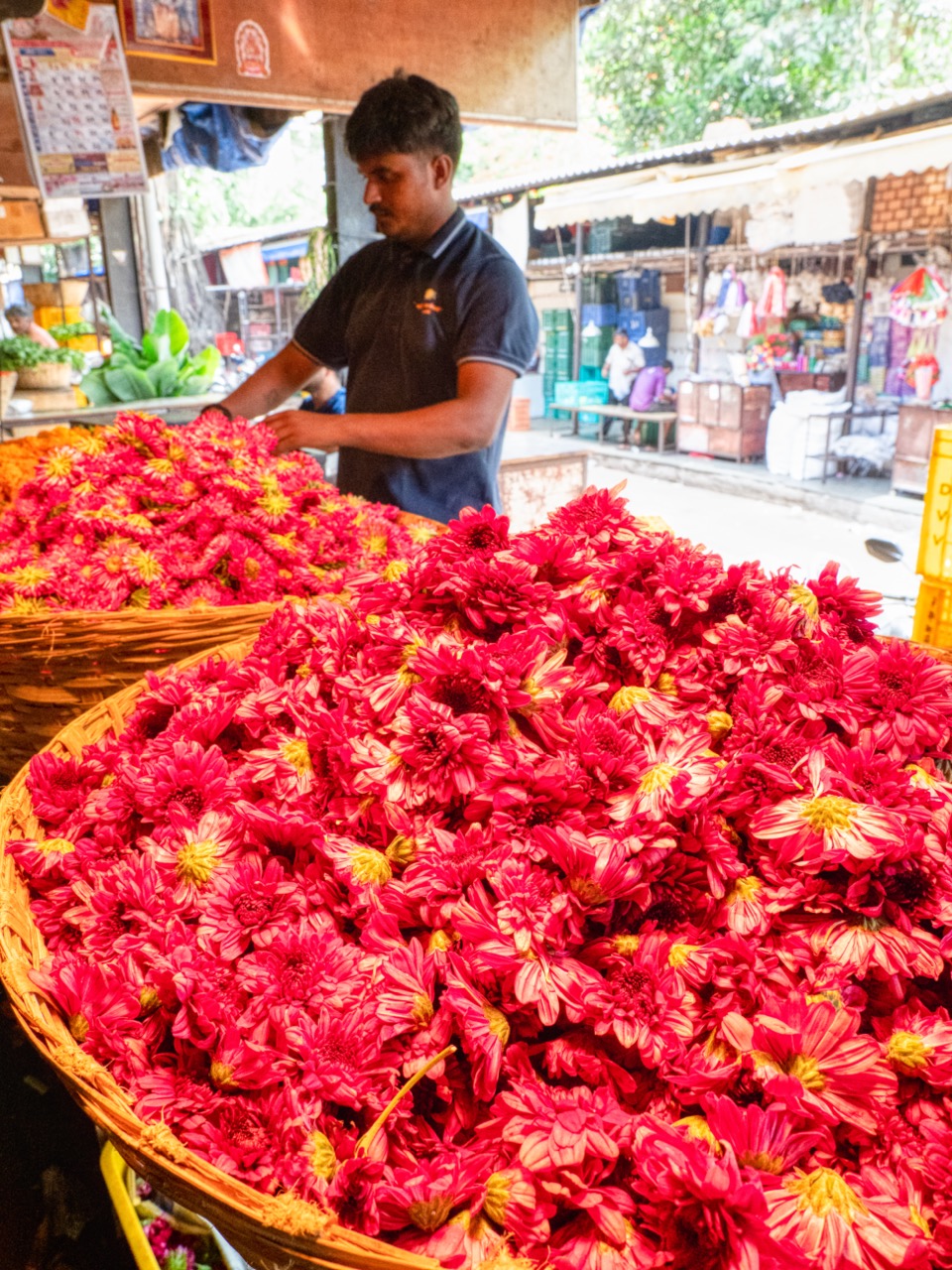
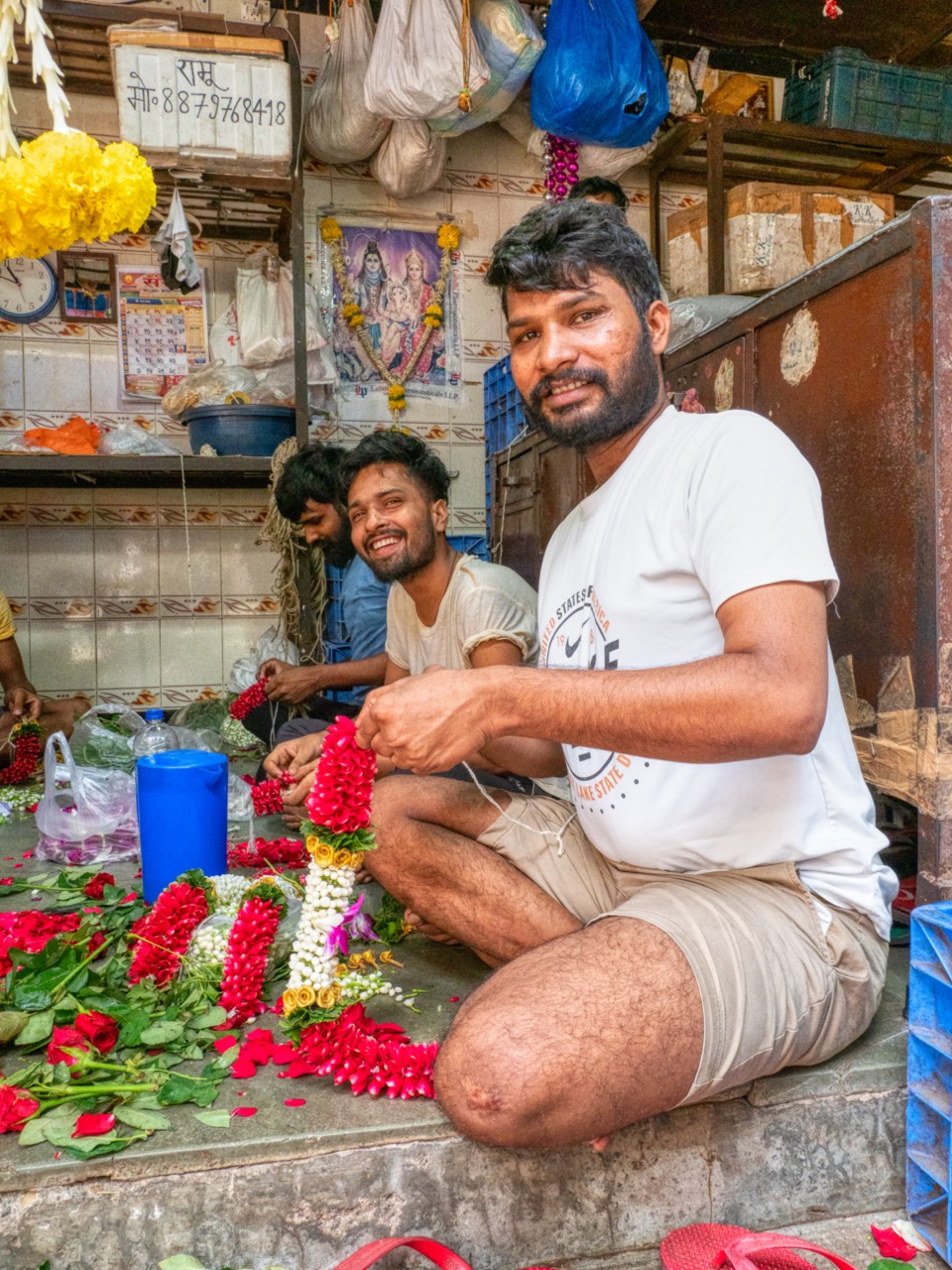
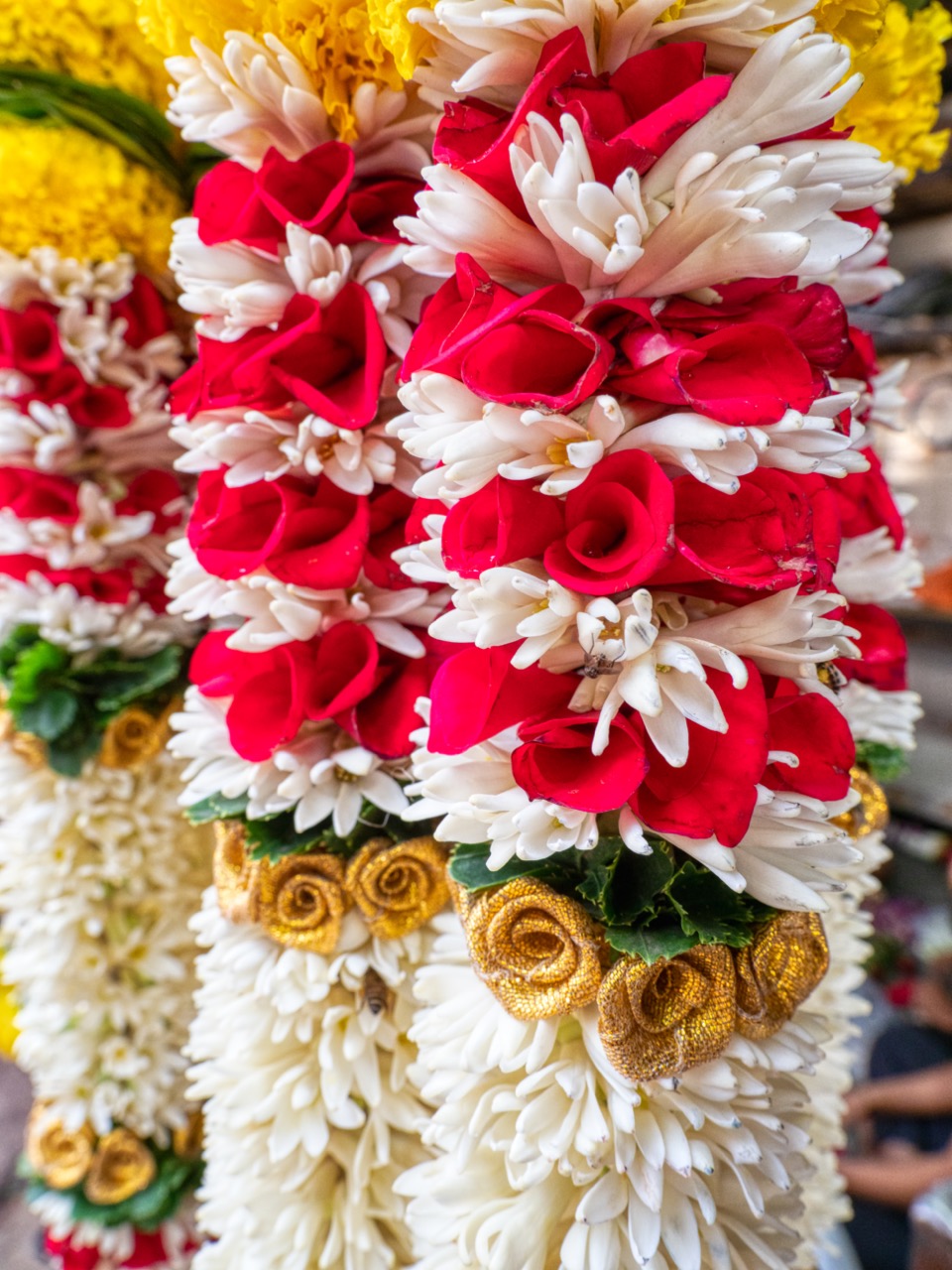
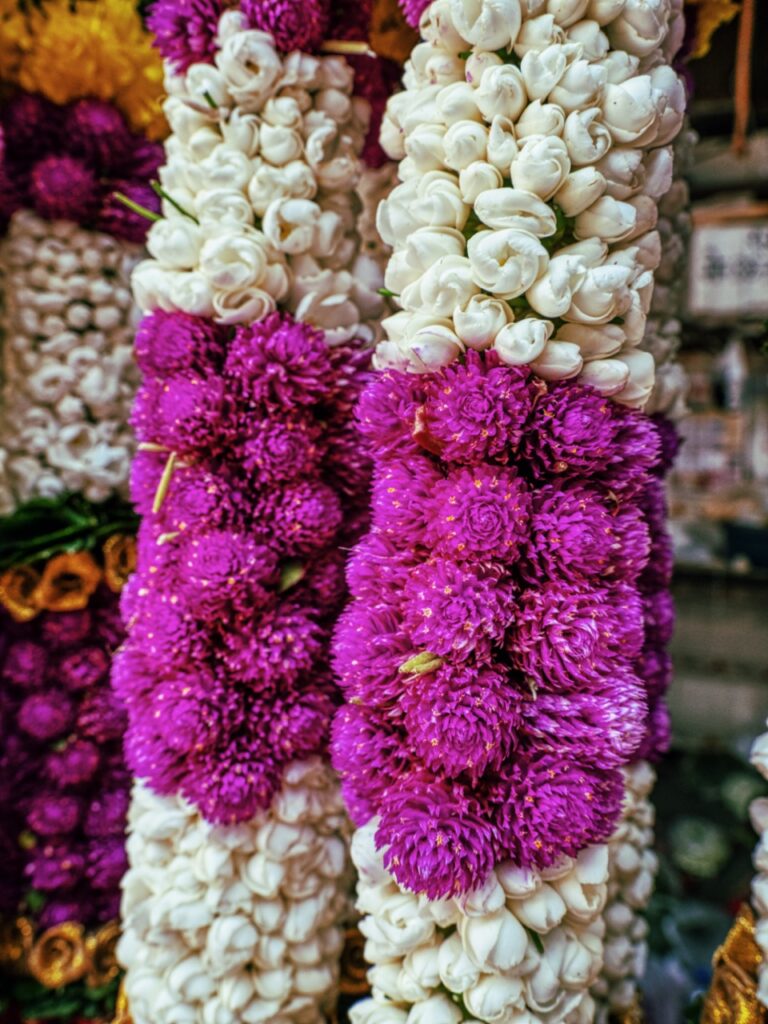
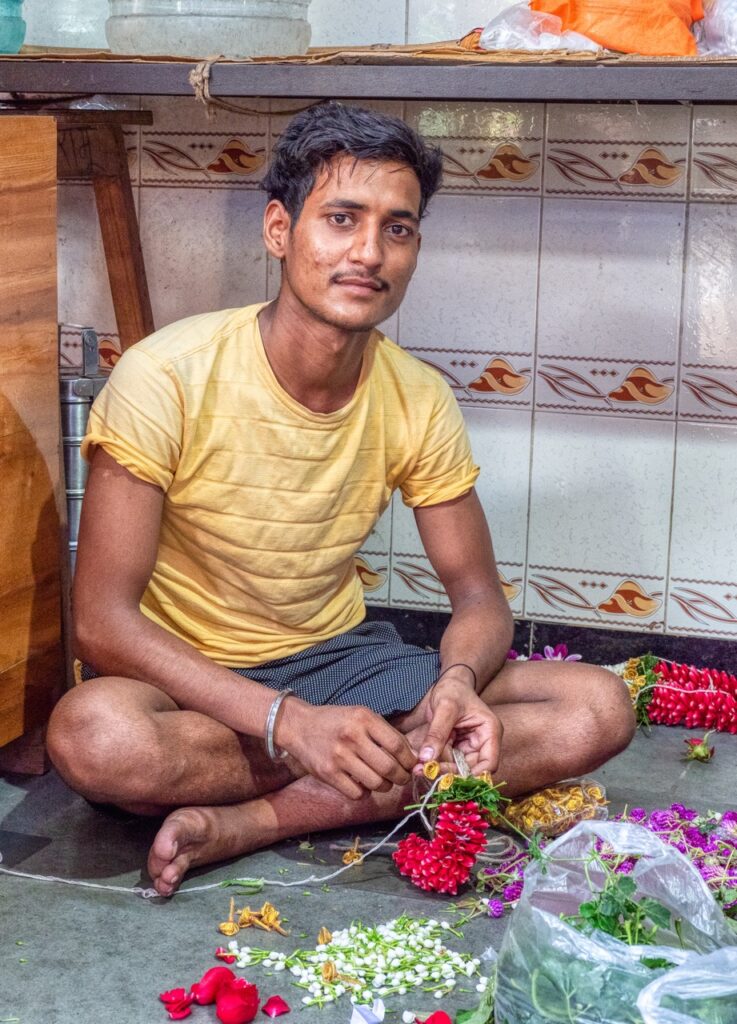
Marine Drive at night
I had heard that this long stretch of the South Mumbai coastline was a popular place for locals to hang out in the evenings, so on my first night in the city I decided to join them! The area was crowded from around 5pm until well after midnight, and people were crammed in nearly shoulder-to-shoulder for a long stretch, either watching the waves crashing in or people-watching in the other direction.
I’d also heard that this stretch was nicknamed “The Queen’s Necklace” because of how it looks when lit up at night. So the next evening, I found a spot on the roof of the hotel where I could set up a makeshift tripod on the edge of a railing and give night shots a try (not ideal for long-exposure shooting, but it was fun to experiment anyway).
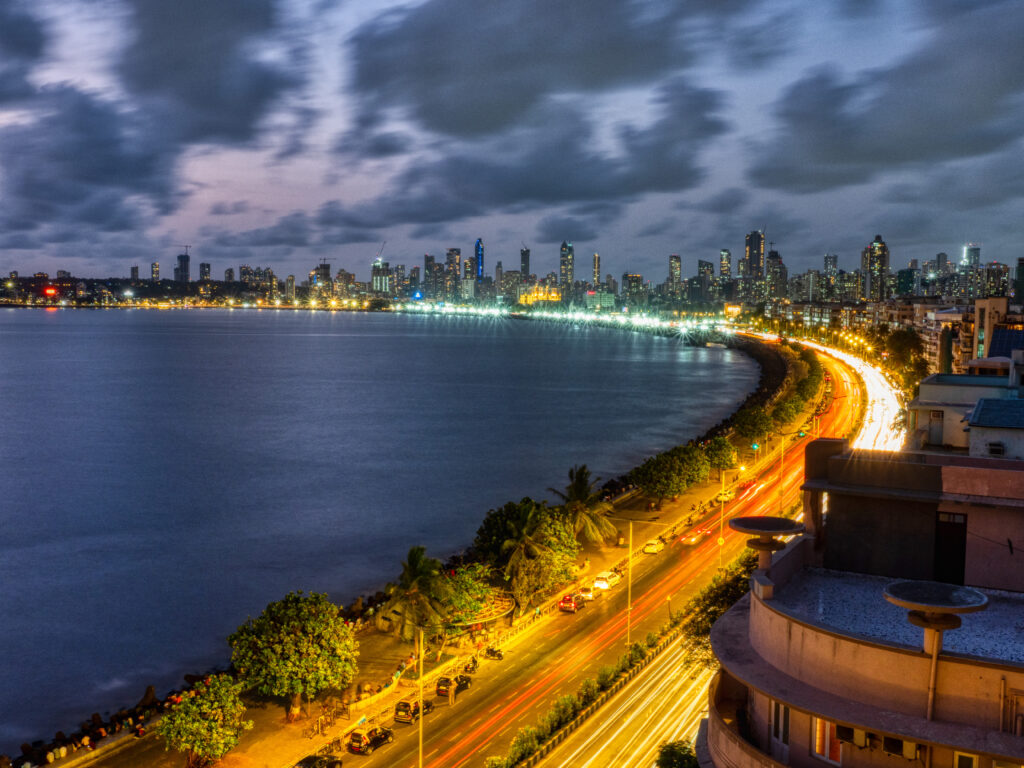
That’s it for Mumbai!
Up next: The “Pink City” of Jaipur!

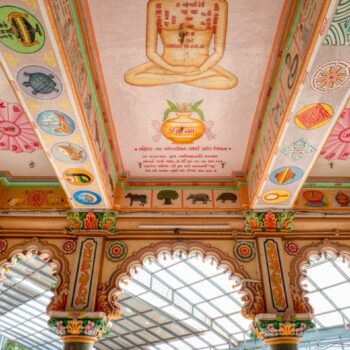
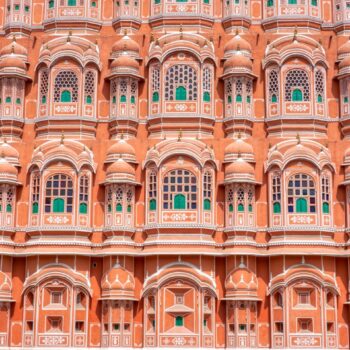
1 Comment